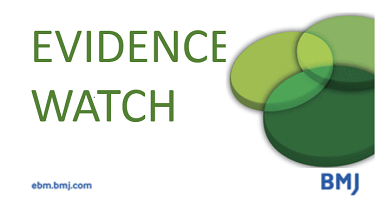Z-drugs might be associated with an increased risk of fractures, falls, and injuries and their use should be considered in the context of overall risk of falls in an individual
Carl Heneghan
 Zolpidem, zopiclone, eszopiclone and zaleplon, are known as the ‘Z-drugs’. They even have their own Wikipedia page. They are a group of drugs with effects similar to benzodiazepines, used to treat insomnia and are thought to have several advantages over benzodiazepines.
Zolpidem, zopiclone, eszopiclone and zaleplon, are known as the ‘Z-drugs’. They even have their own Wikipedia page. They are a group of drugs with effects similar to benzodiazepines, used to treat insomnia and are thought to have several advantages over benzodiazepines.
A recent systematic review evaluated the association between Z-drugs and falls and fractures. The review identified 14 studies (9 case-control, 5 cohorts), and reported Z-Drugs were associated with a significant increase in fractures, (OR = 1.63; 95% CI: 1.42-1.87). However, there was considerable heterogeneity (I2 = 90%). The association remained with the removal of the three studies contributing to the heterogeneity (OR = 1.52, 95% CI: 1.39–1.66).
The effect was further reduced in a subgroup analysis of studies that included control groups diagnosed with insomnia (OR = 1.28, 95% CI: 1.08–1.53) and was moderated when the lower quality studies were removed (OR = 1.40, 95% CI 1.07–1.84). The effect on falls was less clear, and data on injuries was available only for zolpidem (OR = 2.05, CI 95%: 1.95–2.15, I2 = 0).
The quality of the evidence limits the interpretation of these results. Much of the effect can be explained by systematic differences in the selection of the cases and control groups within the studies. Selection bias can occur when individuals or groups in a study differ systematically from the population of interest. Despite these limitations, this evidence should be noted in the context of the overall risk of falls in an individual.
References
Treves N., Perlman A., Geron L.K., Asaly A., & Matok I. (2018). Z-drugs and risk for falls and fractures in older adults-a systematic review and meta-analysis. Age and Ageing, 47(2), 201–208.
Catalogue of Bias Collaboration, Nunan D, Bankhead C, Aronson JK. Selection bias. Catalogue Of Bias 2017: http://www.catalogofbias.org/biases/selection-bias/

BMJ Evidence-Based Medicine – original evidence-based research, insights and opinions on what matters for health care.
Carl Heneghan is Professor of EBM at the University of Oxford, Director of CEBM and Editor in Chief of BMJ Evidence-Based Medicine
Follow on twitter @carlheneghan
Competing interests
Carl has received expenses and fees for his media work including BBC Inside Health. He holds grant funding from the NIHR, the NIHR School of Primary Care Research, The NIHR Oxford BRC and the WHO. He has also received income from the publication of a series of toolkit books published by Blackwells. CEBM jointly runs the EvidenceLive Conference with the BMJ and the Overdiagnosis Conference with some international partners which are based on a non-profit model.